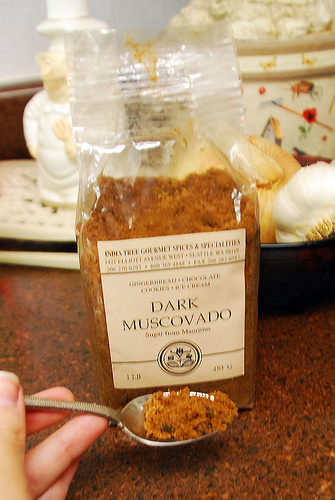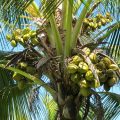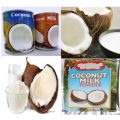Muscovado is not a surname or the kontrabida in a soap opera. It is the less popular version of the sugar that we know. It is brown and soft and comes in powder or lumped form like a sticky clay, or in syrup form like the more chichi honey.

Muscovado has thrived as a backyard industry dating back to the Spanish era. Instead of a gigantic sugar mill, a 12″ x 24″ two-roller cast-iron mill made of cogs, gears and belt and driven by a motorized engine extract juice from sugar canes. It takes about 40 minutes to yield enough cane juice to fill the vat, the locally known kawas, where it is cooked for three to four hours until it becomes sticky. Cooking is the critical phase in muscovado processing that’s why the furnace, using only bagasse (a milling by-product), is designed to emit heat gradually. To hasten the hardening process and allow impurity coagulation, a minimal amount of lime is added.
The curing process depends on the desired type of muscovado. For powder form, the concentrated juice is transferred to rectangular curing tubs where they are vigorously mixed until they solidify into lumps. These lumps are then powdered based on the desired consistency and color and stored in sacks or bags . For the molded product type, the juice is just transferred to a mold, usually coconut shells, for the liquid to solidify.
With only a minimal capital and labor input with just the backyard as the ‘plant’, the muscovado is now ready for the market.
Some producers have regular buyers while the rest settle for the erratic market. Although an integral part of the sugar industry, muscovado is overshadowed by domestic milled sugar production. In fact, in places where there are sugar mills, there is minimal muscovado production. Furthermore, there is little technical and financial support for muscovado producers unlike those of the sugar crop growers who receive much attention and assistance from the government.
Aside from the producers being left at the mercy of traders who seldom give them fair market price, muscovado production technology has a lot of shortcomings. The juice is not fully extracted from sugarcanes and a large percentage of these juices are lost in the process. The juice extracted is not spared from contamination and sediment making the muscovado not acceptable for export. Despite these constraints and the presence of refined and imported sugar in our local market scene, muscovado remains a surviving, if not a thriving industry.
It is used in making grated coconut candies, peanut brittle, banana chips, pili nut candies, bar breadfruit candies and coconut honey. Muscovado has penetrated posh hotels and restaurants as unconventional and delectable coffee sweetener. Health conscious consumers also seek this especially now that being healthy has become an obsession. Going organic and natural has also become a fad, if not a priority.
The Industrial Research and Development Office of the Sugar Regulatory Administration suggests an externally walled, roofed and enlarged muscovado plant and a regular upgrading of the juice extractor especially the engine that powers it for a more speedy extraction.
Installation of screens along the juice canal to the cooking vats or storage tanks will help eliminate extraneous matters in the juice. The transfer of juice can be made efficient by a two-hp motor driven water pump. This would require an additional capital estimated to four times the required capital in the conventional muscovado production. For an industry that seemingly offers little to be desired, this additional capital is well worth the risk.
Muscovado production holds a lot of promise since the processing cost is minimal, relative to milled-sugar production, leading to a higher gross profit. This is the reward to a muscovado producer, for taking the road less traveled in sugar production.
————————————-
Source:
Latiza, Augusto ed. A Primer on Muscovado Production and Technology Industrial Projects Division Sugar Regulatory Administration.
For more information contact Angelina Lojo of Industrial Research and Development Office of the Sugar Regulatory Administration located at Philippine Sugar Center, Annex Bldg. North Ave. Diliman Quezon City or call Tel. No. (02) 926-7227 or email at srairdo@nsclub.net.)
By: Maria Rowena Briones, BAR Digest, July-September 2001 Issue (Vol. 3 No. 3)






